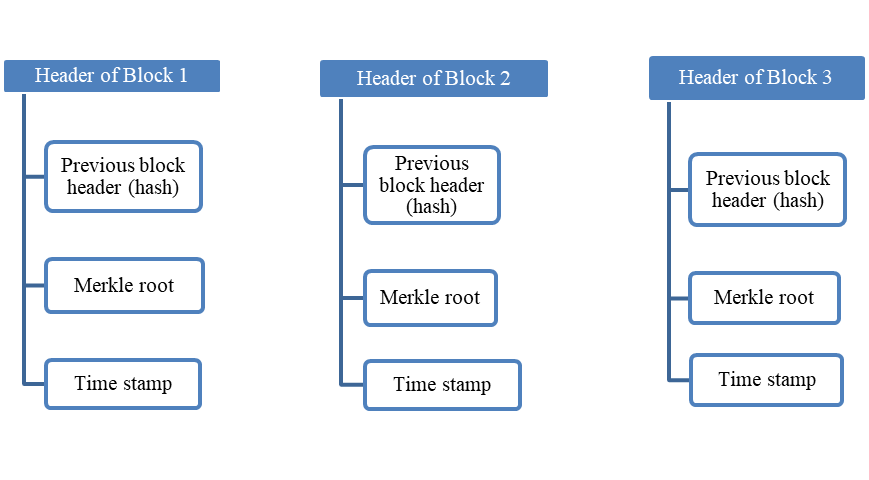Özhan Saglik is Lecturer at Bursa Uludag University in Turkey
Blockchain is one of the latest discussed technologic issues in records management. Questions like 'does blockchain shift our practices radically?' and 'how does it affects the trustworthiness of e-records?' have emerged. We will discuss some points in terms of trustworthiness.
We analyse the trustworthiness of e-records in four stages. These are authenticity, realibility, accuracy and usability. Usability refers to the accessibility and readability by a user. Accuracy is the completeness of the records form elements and reliable records can get by the more and solid records management procedures. We define authenticity as preserving the attributes of records. It has two components: Identity and integrity. Identity is differentiating the records from others, and integrity refers to the non-alteration of the records’ message intentionally or unintentionally (International Research on Permanent Authentic Records in Electronic Systems [INTERPARES], 2008).
How can blockchain technology impact these characteristics of e-record? Now we should show how blockchain works.
We generate records in the blocks and all blocks consist of the hash of the previous block header. Merkle roots consist of the components of records and the time stamp (Lemieux, 2016). The benefits of blockchain are that it is theoretically impossible to deteriorate hashes, so we can not alter the records and we can argue that integrity is protected. Also, if the blocks are generated regarding the procedures, reliability and accuracy can be maintained. How about identity?
We can show the identity of the records by establishing the archival bond. Archival bond is the way of ensuring consistency in the relation between the records which were created or received in the course of the same activity (Cicek ve Saglik, 2017). In a blockchain how can we establish the archival bond? This question is still a debate and archivists/ITs endeavour to solve it (Lemieux, 2017a). Despite some archives and countries are working on some projects (Lemieux, 2017; Collomosse et al., 2018; Bui et al., 2019; Flores er al., 2018; Galiev et al., 2019), we can not see a proper approach for establishing archival bond. Using ontologies as a semantic layer can be solution but we need to do more practices (Lemieux, 2017a).
Also, beyond the identity, blockchain technology has other problematic issues. It is consuming so much energy and we still end up with this problem. It is also possible to alter algorithms used for generating hashes so we should work to create another cryptographic algorithm (Berryhill et al, 2018; Rosenthal, 2018). The identity problem is the hardest problem to be solved and we must shape the blockchain with the perspective of archival science and records management, so the influence of blockchain technology protects the trustworthiness of e-records better.
References
Berryhill, J. et al. (2018). Blockchains Unchained: Blockchain Technology and its Use in the Public Sector. OECD.
Bui, T. et al. (2019). ARCHANGEL: Tamper-proofing Video Archives using Temporal Content Hashes on the Blockchain. In CVPR Blockchain Workshop, 17 June 2019, Long Beach, United States [USA]. Accessed on 7 September 2019 from https://arxiv.org/abs/1904.12059.
Cicek, N. and Saglik, Ö. (2017). Influence of the Archival Bond of E-Records to the Digital Forensics: A Survey in the Context of Records Management Literature. Ozdemirci, F. and Akdogan, Z (Ed.). In Information Systems and Informatics Management: Expectations and New Approaches. (257-276). Ankara University. (Turkish)
Collomosse, J. et al. (2018). ARCHANGEL: Trusted Archives of Digital Public Documents. Proceedings of the ACM Symposium on Document Engineering.
Flores, D. et al. (2018). Real Estate Transaction Recording in the Blockchain in Brazil. Accessed on 6 August 2019 from http://blogs.ubc.ca/recordsinthechain/files/2018/01/RCPLM-01-Case-Study-1_v14_English_Final.pdf.
Galiev, A. et al. (2019). Archain: A Novel Blockchain Based Archival System. Proceedings of the 2nd World Conference on Smart Trends in Systems, Security and Sustainability, 308–312.
INTERPARES. (2008). INTERPARES 2: Experiential, Interactive and Dynamic Records. Ed. Duranti, L. ve Preston, R.
Lemieux, V. (2016). Blockchain Technology for Recordkeeping Help or Hype ? Blockchain Technology for Recordkeeping. Montreal: Social Sciences and Humanities Research Council of Canada.
Lemieux, V. L. (2017). A Typology of Blockchain Recordkeeping Solutions and Some Reflections on their Implications for the Future of Archival Preservation. Nie Jian-Yun et al. (Ed.). In IEEE International Conference on Big Data, 11-14 December 2017, Boston, USA (2271-2278).
Lemieux, V. L. (2017a). Blockchain and Distributed Ledgers as Trusted Recordkeeping Systems: An Archival Theoretic Evaluation Framework. In Future Technologies Conference, 29-30 November 2017, Vancouver, Canada (41–48). Vancouver: The Science and Information Organization.
Rosenthal, D. (2018, 15 February). Do You Need a Blockchain? [Blog Post] Web Adress: https://blog.dshr.org/2018/02/do-you-need-blockchain.html.
